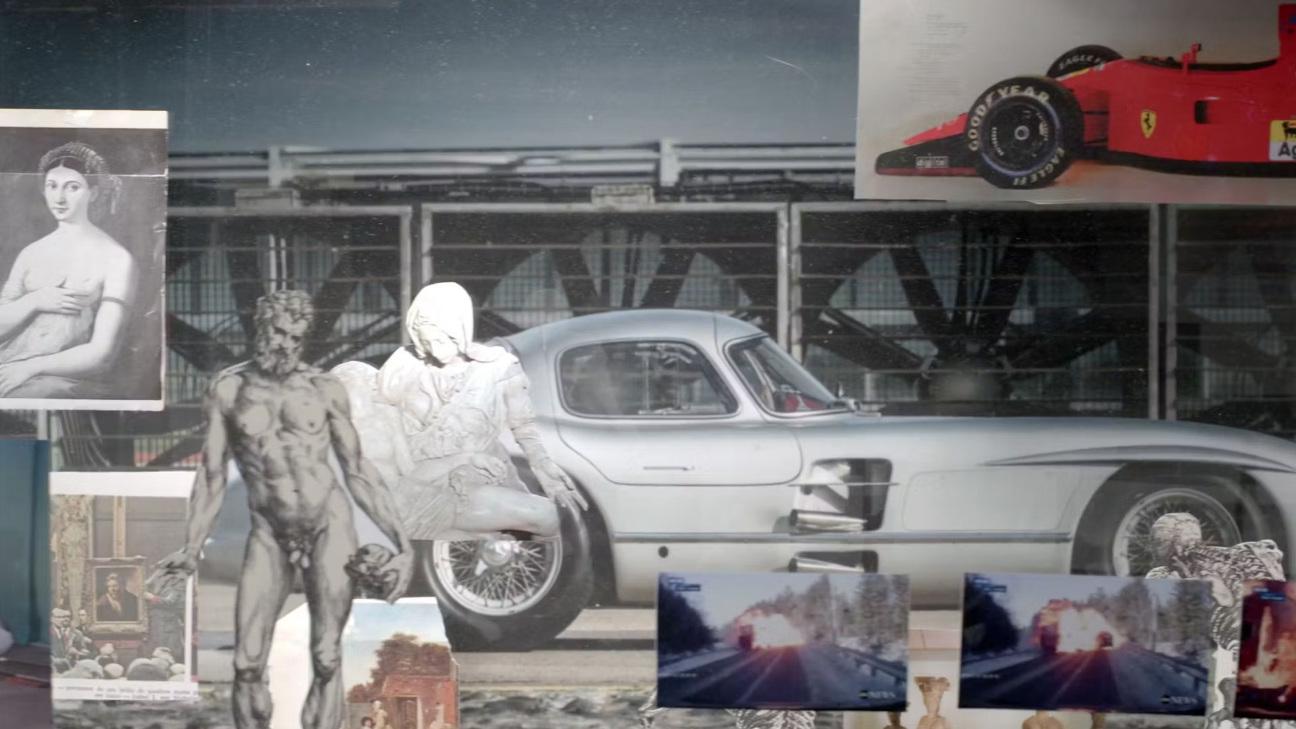“I can’t sleep … Of course I can’t sleep, because there is too much to look at.” So intones the narrator of Sara Cwynar’s Soft Film, 2016. For more than a decade, the Canadian artist has made videos and photographs that explore the ties that bind together capitalism, desire, misogyny, and information overload in the digital age. Her latest film debuts at 52 Walker, David Zwirner’s Tribeca outpost, on Oct. 4. Two years in the making, it is her longest and most ambitious yet.
While much of Cwynar’s oeuvre explores items marketed to women—from dolls to clothes to makeup—this film, titled Baby Blue Benzo, takes as its point of departure a decidedly masculine lust object: the 1955 Mercedes-Benz 300 SLR Uhlenhaut Coupe. The compact silver car sold for $142 million in a secretive auction in 2022, becoming the world’s most expensive automobile. “I wanted to make a film about the arbitrariness of value and how things become important to certain people,” Cwynar explains.

The roughly half-hour-long video, shot on both digital and 16mm film, includes archival footage of car crashes and assembly lines, a dream sequence of ice skaters dressed in car-racing costumes, and shots of a bikini-clad model reclining on a fake replica of the prized vehicle. (Cwynar even hired a former car commercial narrator to enthusiastically cheer, “The Mercedes Benz!”)
Cwynar shot the fake car footage on an LA soundstage alongside other theatrical, oversized props like a giant clock and a piece of fake meat. It’s a nod, in her eyes, to Surrealism as both an expression of dreams and an increasingly common source of inspiration for advertising. The film alternates between a fast-paced, tightly stitched collage of industrialization (the urge to acquire, produce, and accelerate) and a slower register that embodies the anxiety of insomnia (the urge to slow down).
For Cwynar, these segments are two sides of the same coin. “The dreaming, sleeping part is about trying to reform yourself in a world where all these things are offered to you, but none of them are things you can access,” she says. The drive to possess and the drive to rest are twin expressions in our cacophonous, late-capitalist world—one where we’re all constantly yearning for both satisfaction and relief.










 in your life?
in your life?

